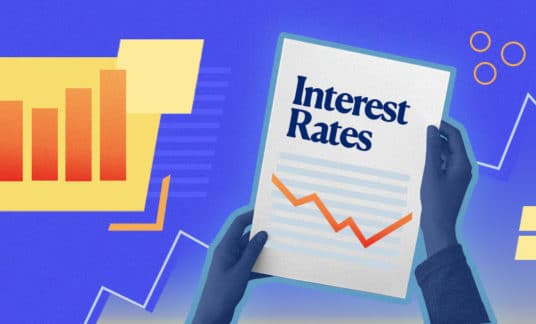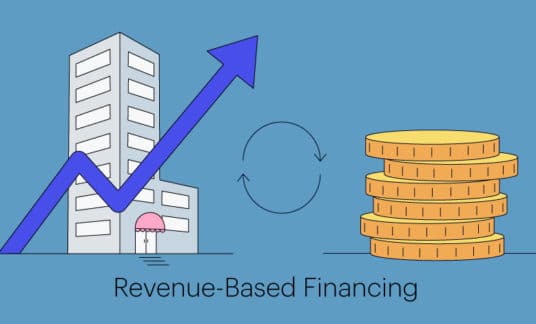When you map out your current supply chain, chances are it looks something like this:
Manufacturer → Wholesaler/Distributor → Retailer → Customer
While this method of fulfillment certainly isn’t going away anytime soon, a growing number of companies in a variety of industries have begun bucking this route in recent years.
Many companies have experienced major success in implementing vertical integration into their business.
What Is Vertical Integration
Vertical integration is when a company assumes responsibility for one or more processes along the supply chain in addition to the company’s core responsibilities.
Brands do this either by absorbing or merging with partner companies in different stages of the manufacturing or sales process. For example, a computer company may buy out the manufacturer of specific hardware, or a wholesale company and one of its partner retailers may decide to merge with a retailer of its products.
As a result of these mergers or acquisitions, vertically integrated companies are able to grow their profits and take greater control of costs.

Vertical Integration Examples
Vertical integration can occur either “forward” or “backward.”
Forward vertical integration occurs when a company absorbs one or more entities to move “up” in the supply chain, taking over parts of the process that are closer to customers.
One example of forward integration is Amazon’s 2017 acquisition of Whole Foods. This acquisition meant that Amazon would assume the responsibility of distributing and selling products to customers, as opposed to just wholesale distribution.
Backward vertical integration is just the opposite: A company absorbs or merges with a company (or companies behind them) in the supply chain.
Apple, for example, is well-known for purchasing many of the companies that manufacture the parts used in its various products. Since manufacturers have to mark up their finished parts in order to turn a profit, these acquisitions allow Apple to cut the cost of its goods because the company is effectively able to purchase component parts at cost. Apple, in turn, ends up adding to its own profit margins. These increased profits can cover the costs of acquiring manufacturers over time.
Key Benefits of Vertical Integration
Whether vertically integrating forward or backward, there are many advantages of vertical integration.
Here are some benefits of vertical expansion:
1. Control of Product
One of the main reasons companies decide to embark on a vertical growth strategy is a desire to have control of the products they offer.
For example, a retailer or wholesaler might wish to take control of the manufacturing of a product for two main reasons:
One, this will allow the retailer/wholesaler to develop the product in a way they know their customers want. It will also give the retailer/wholesaler ownership over proprietary products or materials created by the manufacturer.
For example, since Apple owns the companies that develop different technologies, Apple can ensure the components used to develop products are up to the company’s standards—rather than simply choosing from the best available technology or materials provided by a selection of developers or manufacturers.
Two, a manufacturer or wholesaler might be unhappy with how a retailer is presenting its products and may consider buying out the retailer. Once the manufacturer or wholesaler is vertically integrated with the retail company, it can then showcase its products however management wants within the retailer’s brick-and-mortar and online stores.
2. Control of Costs
Sometimes, vertical integration is simply about simplifying and streamlining processes to reduce costs.
In the conventional supply chain, the next-in-line is reliant on the previous one to come through for them. Needless to say, any hangup on one end can potentially cause disaster for all subsequent parties involved in the process moving forward. By integrating into a single company, the “host” company takes control of all of these processes—and can ensure these processes run exactly as planned.
Even if things do go smoothly without vertical integration, there’s still a variety of costs inherent with doing business with a third-party company. So, if a retail company were to take ownership of the entire supply chain through a series of mergers, it wouldn’t have to pay the price set by its wholesalers or manufacturers. It would just need to pay for the cost of actually going through these supply chain processes internally.
In either case, the money and resources saved over the long run can then be reinvested into the company’s various processes, allowing it to grow even more over time.
3. Control of Market
If a company has complete control over the quality of its products, as well as full control over the cost of running its business efficiently, they can pretty much control the market.
Take Netflix, for example. Several years ago, the company was just getting off the ground by distributing content created by a variety of third-party producers. Now the media giant is investing billions into creating proprietary content in addition to offering content created by others.
For consumers, this means they’ll need to pay for at least a month’s subscription to check out Netflix’s latest original movie or show.
Also, if you want to watch this original content, you have to pay whatever Netflix charges. While Netflix is still in the middle of disrupting the cable industry (and, therefore, still offering its services at bargain-basement prices), you can be sure that the service’s rates will continue to creep up the more in-demand the service becomes. This wouldn’t be possible if the company simply kept offering content its audience could get elsewhere.

Potential Challenges to Consider Before Becoming a Vertically Integrated Business
While the benefits of vertical integration can be huge for your company, you also need to consider the potential pitfalls you may encounter along the way.
1. Upfront Costs
For the acquiring company, vertical integration is an expensive ordeal.
First of all, there’s the cost of actually purchasing the smaller company and the cost of ensuring a smooth transition overall.
Along with the more overt “price tag” of the company comes the hidden costs of going through the acquisition process.
The other main upfront cost that acquiring companies will occur is in immediately implementing any changes needed to improve the company. Using some of our previous examples, this could mean getting to work on things like:
- New marketing initiatives
- Product development and iteration
- Streamlining fulfillment processes
2. Ongoing Investment and Management
Vertically integrating multiple companies requires ongoing investments and the management of multiple brands.
Depending on how and why a merger occurs, this may be as simple as making various improvements and allowing the absorbed company to continue running relatively autonomously. In other cases, a more hands-on approach may be required to keep the acquired company moving forward.
It’s also worth mentioning that organizations on two different levels of the supply chain are commonly different. There will likely be many differences in how each company needs to be run. If you’re not prepared for these differences, the cost of addressing them can be astronomical.
The main thing to consider before vertically integrating with another company is whether or not you’ll have the bandwidth to run both companies successfully. Without the proper resources to invest in both companies on an ongoing basis, business integrations that seemed like a perfect fit can entirely fall apart.
3. Potential Negative Reaction
While you know that the ultimate goal of merging with another company is to improve the customer experience in some way or another, your customers won’t always see it that way.
When Amazon merged with Whole Foods, many of the latter’s customers accused the grocery chain of “selling out.” While the negative reaction to the merger was short-lived—and possibly even overblown—this stands as a stark warning to companies thinking about merging with another company in any form: Be wary of your customers’ perception of your business decisions. Even if integrating with another company will allow you to better provide for your customers, you need to ensure they see this value upfront for it to matter.
Horizontal Integration vs. Vertical Integration Strategy
One thing to remember about integrating vertically is that it’s very different from a horizontal growth strategy.
Horizontal integration is when one company buys or merges with one or more other companies on the same level of the supply chain.
So, while Netflix buying a production studio might serve as an example of vertical integration, purchasing another streaming service to add to its user base would be an example of horizontal integration.
In practice, business mergers and acquisitions include aspects of both vertical and horizontal integration.
Free to Grow
Vertical integration provides a way for companies that feel restricted by other companies in their supply chain to take charge. Through vertical growth, these companies can make the changes they know will allow their business to run as they had planned.
Vertical integration can allow your company to experience success beyond anything that would be possible had you not taken more control over your processes. As long as you can maintain a steady course toward the vision you had when deciding to merge, vertical integration can be just the ticket to the top of your industry.










